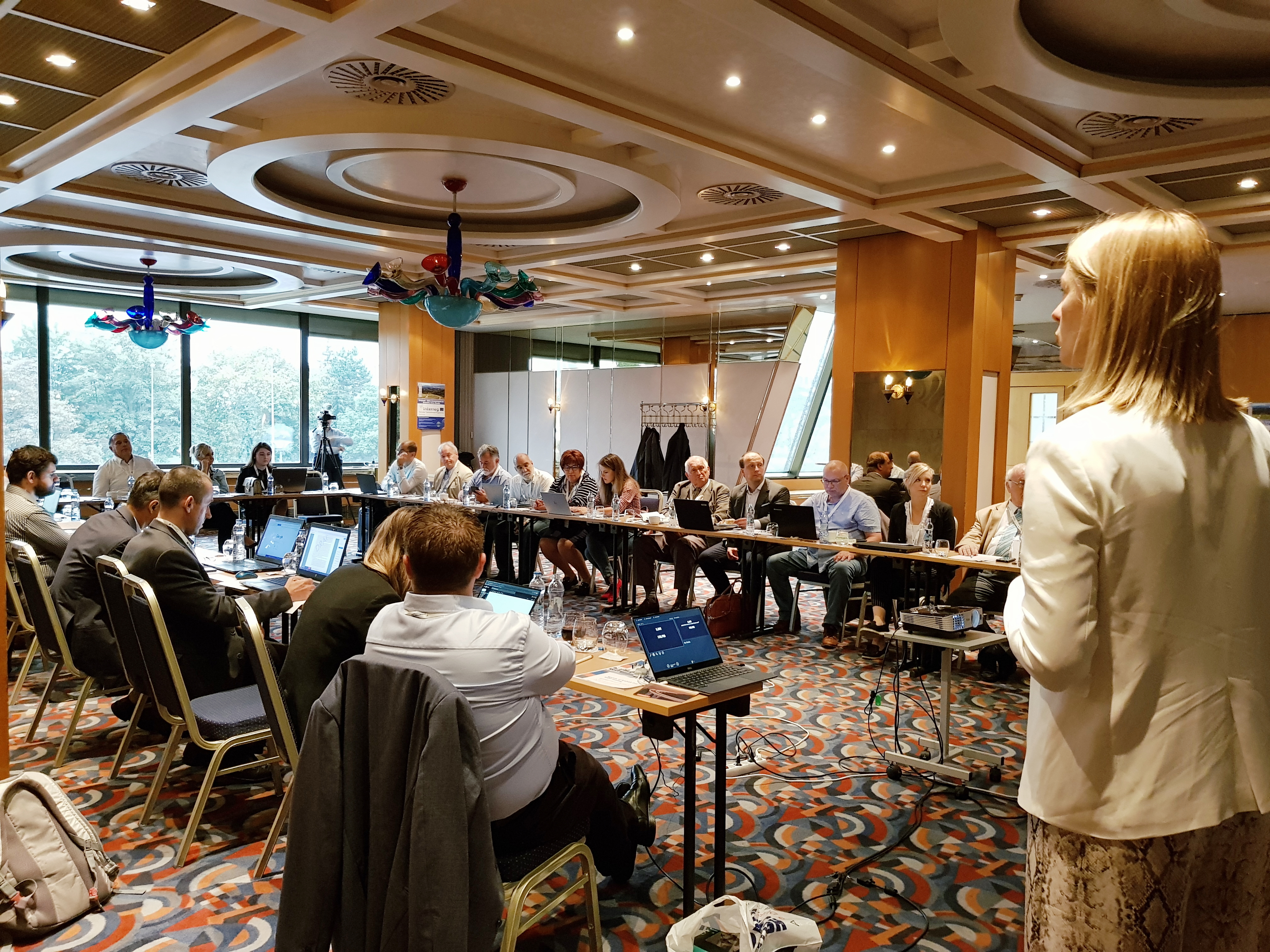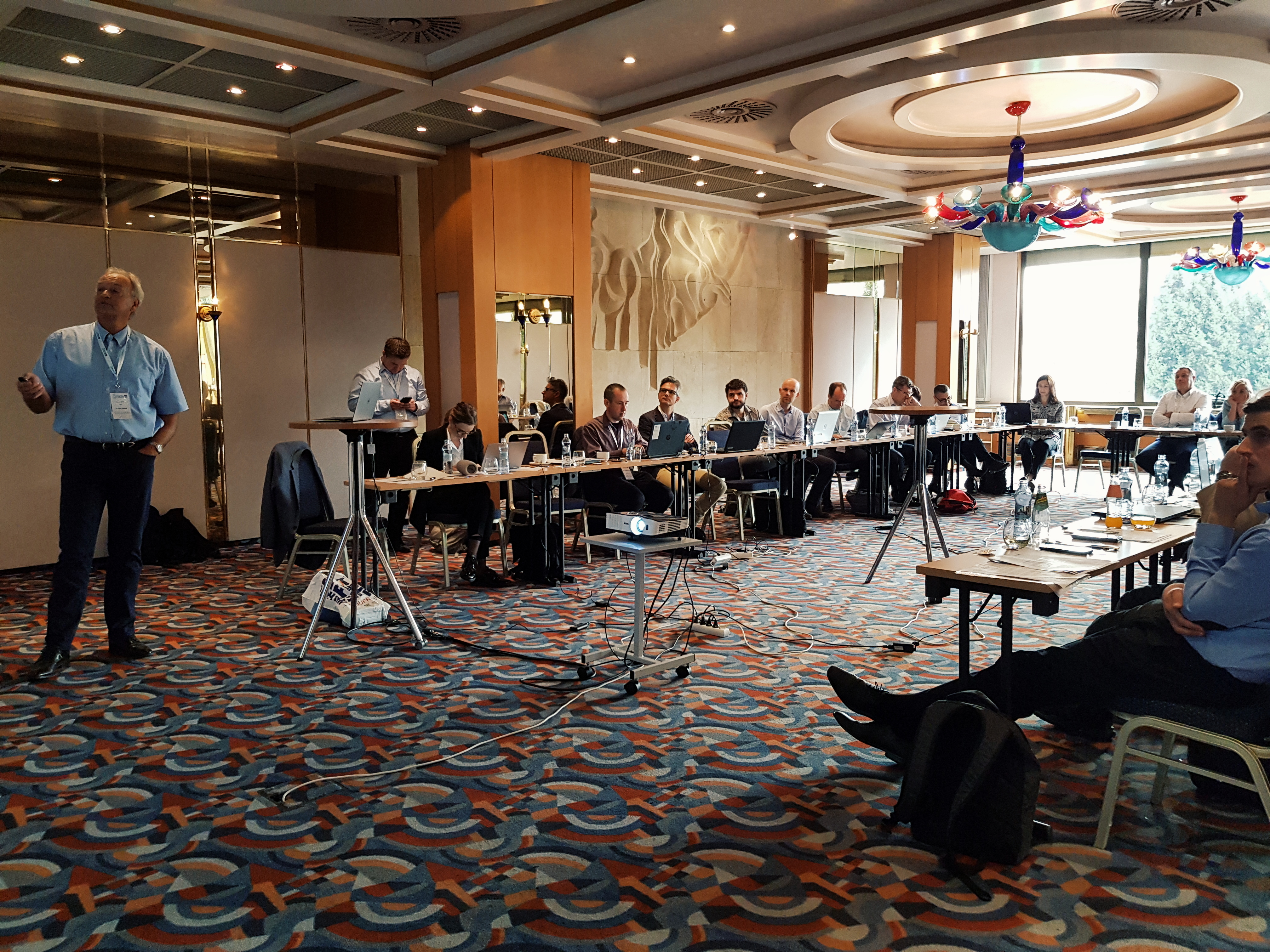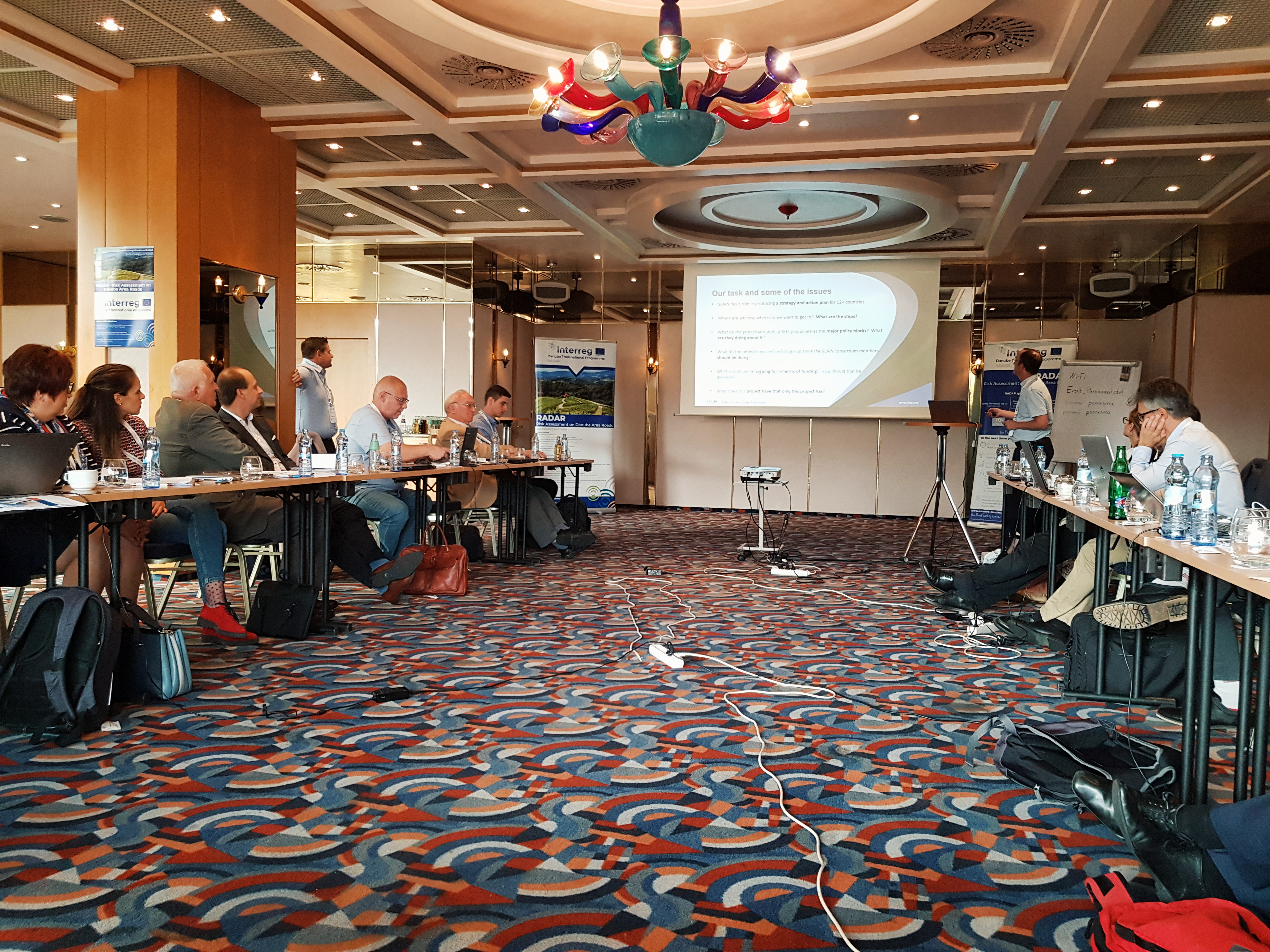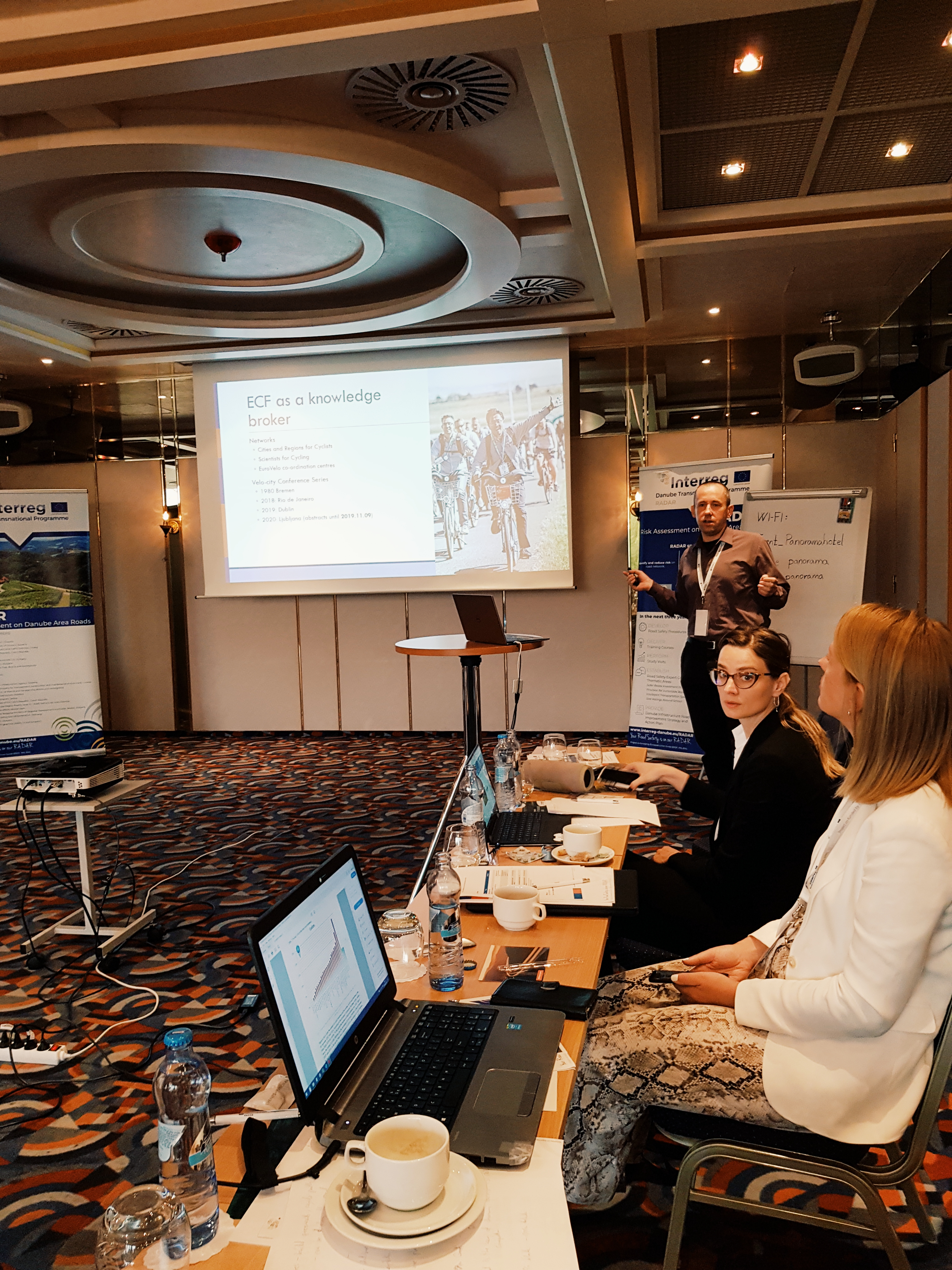RADAR - SECOND RSEG MEETING: ROAD SAFETY IS A SHARED RESPONSIBILITY
03-10-2019
On September 25, 2019, in Prague, Czech Republic, the RADAR project implemented the second Road Safety Expert Group (RSEG) meeting on Thematic Area 2 – provision for vulnerable road users (pedestrians and cyclists). The event was attended by representatives of RADAR project Partners, as well as representatives of the International Federation of Pedestrians (IFP), European Cyclists’ Federations (ECF) and European Bank for Reconstructions and Development (EBRD) as well as road safety experts from Traffic Technical Institute (PTI) and National Technical University of Athens (NTUA). The lecturers of the event were also representatives from the Croatian Automobile Club (HAK) as well as from Roads of the Federation of BH Ltd Sarajevo (JP Ceste).

Marko Ševrović, Senior Road Safety Engineer and road safety expert at EuroRAP-EIRA, opened the meeting with explaining the purpose of RSEG meeting: “The main goal of Road Safety Expert is to establish good practice in prioritising road sections for treatment and will select methodologies for road safety. RSEG will detail the drafting and adoption of the Danube Infrastructure Road Safety Improvement Strategy (DIRSIS) and Danube Infrastructure Road Safety Improvement Action Plans (DIRSIAP).”

RSEG TA2 focused on provision for VRUs
The second RSEG meeting was organised by the RADAR project Partner General Automotoclub of the Czech Republic (UAMK) in Prague, Czech Republic. The meeting was oriented into optimised provisions for vulnerable road users (pedestrians and cyclists) and assessment of the potentials for dedicated infrastructure provision and policy attitudes towards dedicate provisions for VRU(s) in the Danube region. Provision for VRUs primarily focuses on locations where successful countermeasures for VRUs have been implemented and locations where the best opportunities exist to implement future countermeasures, i.e. locations where there is pedestrian or cycling activity but no footway or cycle provision and where pedestrian crossing facilities are absent or of poor quality.

As explained by Bojan Jovanović, road expert and engineer from the University of Zagreb, Faculty of Transport and Traffic Sciences, “the road accident data available in the CARE database show that pedestrian fatalities in EU28 constitute approximately 22% of all road deaths. The pedestrian fatalities have the second largest proportion in the total number of road traffic accidents just after passenger car occupants and motorcyclists’ categories.” Peter Lipar, the road expert from PTI, University of Slovenia, Faculty of Civil and Geodetic Engineering, stated that “the three main causes of the most serious pedestrian accident in the last five years are disregarding the right of way, speeding drivers and pedestrian irregularities.”
To prevent road accidents safer road infrastructure Safety must be implemented
“Although a shift in a policy is a big issue and a challenge having to find an opportunity to improve safety for vulnerable users is a necessity,” clarified Derran Williams, EBRD. Serghei Diaconu, Automobile Club of Moldova, explained that to improve road safety of each road users, especially the most vulnerable ones, “general infrastructure improvement must be implemented to prevent accidents from happening. The solution is to create a dedicated lane where possible, improve pathways surface, eliminate high curbs and change the culture and behaviour of all stakeholders on the roads.” Steve Lawson, iRAP, also has stressed the importance of discussing if the separation of the road for cyclists is the desired goal, how effective the existing vulnerable road user crossing facilities currently are and the appropriate speed limit for vehicles in areas where there are either pedestrians or cyclists.

Although as Krešimir Viduka, HAK, explained “statistics about fatalities show that the motorcyclists, cyclists, and motor drivers are the most vulnerable road users,” we must not forget about other road users – also vulnerable ones.“Active traveling is becoming more popular than ever so this is a challenge for the future and there is a strong need for regulations regarding the use of electric bikes, scooters, as well” added George Yannis, NTUA.
Lack of cooperation among different road authorities?
In Slovakia, busy roads with high traffic are the most dangerous because motorway constructing is not finished yet and there is no unique design of the road crossing. “The drivers are not respecting cycling lines, different designs, cyclists and pedestrians are often in collision in the pedestrian zone,” continued Martin Juck, EuroRAP. To which Vanina Katsarova, Bulgaria Association for Road Safety, added that “identified major problems in Bulgaria are lack of proper pedestrian infrastructure, especially in rural areas, absence of marked crosswalks, poor visibility in darkness, lack of discipline and culture on the road, lack of cooperation between the newly established RSA and the Road Authority.” Similarly, in Bosnia and Herzegovina authorities are “aware of the fact that level of road safety for vulnerable users is poor,” and although they are trying to solve the issues and improve safety of VRUs by introducing road safety education of children of preschool and school-age, it is a long way to the top, explained Reuf Boracic, JP Ceste.

Mário Alves, IFP, explained that although promoting walking and cycling is a good cause, it is also “a big paradox and dilemma. That's why we are also present in the political arena. What we want is that children, pedestrians, and cyclists to be political actors for change of infrastructure space. And that's something that we have talked about here today. If we know the technical solutions, why don't we implement them? We need to be more politically engaged to ask politicians, technicians, infrastructures, for better conditions.” And we need to “encourage collaboration and cooperation among different road authorities – include both local and national authorities. Communities play an important role in bringing people together demanding safer walking and cycling environment,” agreed Olivera Rozi, EuroRAP-EIRA.

To learn from each other, to implement best practices in infrastructure, administrative processes and measures and to have pedestrians and cyclists in mind when building and planning big infrastructure, is the way we contribute in making changes in improving road infrastructure safety for all road users, concluded Aleksander Buczynski, ECF.

Click HERE for more photos from the 2nd RSEG meeting.

